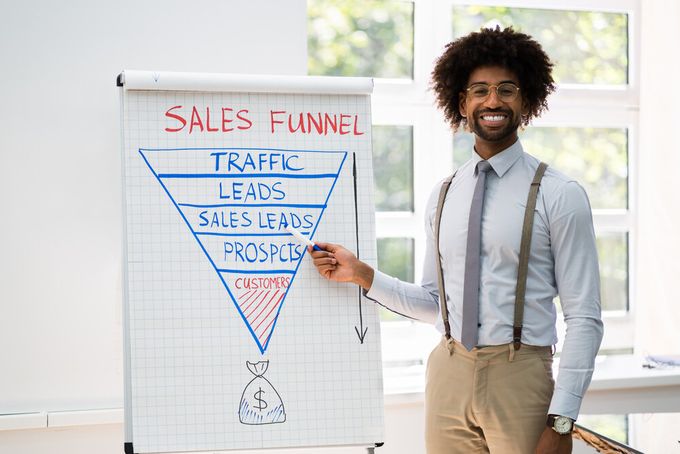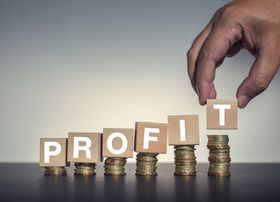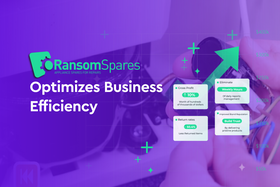Ultimate Sales Funnel Metrics Guide for E-Commerce Sellers
Updated November 30, 2022

When it comes to e-commerce and multichannel retail businesses, the importance of analyzing sales funnel metrics can never be understated. It's an incredibly smart way to analyze the interactions your customers have with your site, from their first touchpoint through to conversion. What's more, the calculations aren't complicated, yet they can benefit your business immensely.
» Can you use an app to analyze your sales funnel? Compare these top Shopify sales funnel apps
Defining the Sales Funnel
A "sales funnel" is marketing speak for your customers' journey from landing on your website to finalizing a sale. It's a relationship-focused framework that structures the timing of the build-up to achieving a conversion.
The funnel is separated into various stages which usually align with your GA4 micro and macro sales funnel goals. Just remember that the micro and macro steps to achieving a conversion are unique to every business.
4 Stages of the E-Commerce Sales Funnel
Even though some e-commerce companies have developed more comprehensive iterations, a typical sales funnel is divided into four stages:
Stage 1: Awareness
Your first step is to improve the visibility and presence of your brand and start collecting leads. It's an information-sharing stage where you need to use creativity to stand out from your competitors.
How does the visitor get to this stage? You catch their attention with sponsored social media posts, guest podcasting, webinars, independent research, SEO—anything that builds awareness without being too pushy.
Your visitor is gently nudged to stage 2 if they sign up for a marketing newsletter or watch a webinar. These actions must be defined clearly in your sales funnel.
Stage 2: Interest
Next, you need to change your visitors' awareness of your products or services into showing an interest in what you have to offer.
Visitors get to this stage because they've had an interaction with your brand and now have an understanding of your products or services.
To turn their interest into desire, you need to identify and use keywords to drive these visitors to your social media platforms and website. You can also develop blog posts that target these users as well as email campaigns and free trials.
Stage 3: Desire
The aim of this stage is to build a desire in the visitor to purchase a product or service. You also want to build trust so that the visitor starts to feel comfortable with your brand.
Visitors have entered the third stage when they start researching your catalogs and different pricing models. They'll look for social proof by reading product reviews and testimonials.
You can boost this by offering the visitor case studies, tutorials, demos, and product comparisons to help them along to the action stage.
Stage 4: Action
The final stage aims to convince the visitor to take action and finalize a conversion.
To get the visitor to this stage you can offer them time-sensitive discounts and special bundle deals. It's critical in this stage to answer any questions the visitor poses quickly and professionally.
You can further develop the relationship by sending out consistent email marketing that's hard to ignore. Also consider using retargeting strategies at this point.
9 Essential E-Commerce Sales Funnel Metrics You Should Be Tracking
For tracking purposes, stages two and three of the sales funnel are combined to present the metrics according to three phases: the top, middle, and bottom of the funnel.
Top of Sales Funnel
When your visitors filter into the top of your sales funnel, they're in the process of becoming aware of your brand and discovering your offerings. The metrics that you should be tracking at this point include:
1. Traffic
This is the general traffic on your site and on your product or service pages. It will help you understand visitor movement and interactions (why general traffic increases or decreases).
If you monitor the dips and increases in traffic flow, you can see which of the changes you implemented on your site are attracting more traffic and which are switching visitors off your site. Use these insights to keep reworking your site until you achieve optimum results.
2. Entry Point
This metric will tell you where the visitor entered your website (landing page), and which source led them to your site. This can be a specific social media platform or another website that backlinks to you.
If you find that one particular source (or multiple) is bringing your site the most traffic, you can work on targeting that source and pulling in more visitors.
3. Bounce Rate
Discover which page the visitor was on when they decided to leave your site. You must find out what caused the visitor to "bounce" before a conversion was finalized and address it.
The average bounce rate for an e-commerce website ranges between 20% and 45%. If your bounce rate is lower than the average range, you're doing well.
Middle of Sales Funnel
This phase analyzes whether your visitors become interested in your products or services. Use the below metrics to calculate how well you're engaging the leads that have come through from the top of the sales funnel.
4. Customer Acquisition Cost (CAC)
CAC is the total overall cost to acquire a customer. It includes the cost of producing, storing, and shipping the products your visitors have purchased as well as any marketing costs. Use this formula to track your CAC:
CAC = Amount Spent on Marketing / Number of New Customers
Each industry has its own average CAC to use as a benchmark. Make sure to look up yours as a simple guide.
» Still unclear about CAC? Learn which expenses influence e-commerce CAC
5. Sales Funnel Velocity
This sales pipeline metric measures how quickly your visitors move through your sales funnel and therefore how quickly your website is generating new revenue. Use this formula to calculate your sales funnel velocity:
Sales Funnel Velocity =
(Number of Opportunities) x (Average Deal) x (Conversion Rate) / (Sales Cycle Length)
"Number of opportunities" refers to how many leads entered the funnel, while "average deal" is a specific value e.g., your average selling price or customer lifetime value. "Sales cycle length" is your chosen sales period. We discuss "conversion rate" more below.
Bottom of Sales Funnel
This stage is your ultimate goal—to convert those leads you've generated into sales. The metrics you would use in this phase include:
6. Conversion Rate
This metric measures how many of your leads convert into sales. Use the following formula:
Sales Conversion Rate =
Total Transactions / Total Visits x 100
If your sales conversion rate is between 2% to 3%, then you're hitting the mark. Anything higher than this range means you're doing better than the norm.
» Is your conversion rate below average? Discover how to increase your conversion rate
7. Average Order Value (AOV)
Use AOV to measure how much—on average—your visitors are spending per order. It will help you decide whether you should spend some time to formulate special deals, packages, and discounts to encourage users to spend more. Use this formula to measure your average order value:
AOV =
Total Revenue / Total Number of Orders
AOV is an important metric because it influences other calculations and the overall health of your business. It can increase your customer lifetime value, decrease your CAC, and increase your overall revenue.
8. Cart Abandonment Rate
This metric tells you how many of your leads are abandoning a sale before conversion. Just like your bounce rate, you must find out why visitors are abandoning sales and address it. The formula is as follows:
Shopping Cart Abandonment Rate =
(Number of Completed Purchases / Number of Shopping Carts Created) x 100
Cart abandonment rate depends on a number of factors like device used, industry, and time of day and year. The average cart abandonment rate can be as high as 70%.
» Worried about your cart abandonment rate? Find out how to manage, prevent, and recover abandoned carts
9. Total Sales
This is the total revenue of your e-commerce store. It's critical for calculating your profits and losses and gauging the "health" of your business. Use this formula to calculate total sales:
Total Sales = Number of Items Sold x Sales Price
Use total sales to determine a top and bottom line as well as your breakeven point. It's important to set goals for your business and track whether they are achieved.
» How do you calculate profits and losses? Find the essentials of profit and loss statements here
5 Benefits of Sales Funnel Analysis for E-Commerce
Significantly Enhances Productivity
Your site becomes organic and dynamic, constantly improving because of the data you're analyzing. The result of constant analysis is constant improvement in productivity and therefore a better bottom line!
Enables Predictability of Results
You take the guessing game out of business because you can monitor and track literally all aspects of your e-commerce store. This makes results more predictable, giving you the opportunity to act proactively instead of reactively.
Allows Better Use of Resources & Opportunities
When your sales funnel is optimized, you'll be able to use your resources effectively. You'll also be able to make the most of the opportunities you get to take your business to new heights.
Enables Management Optimization
The more data you have, the more you can read into the finer details of your business. It will give you more control over the different stages of the sales funnel. You'll have your finger on the pulse!
Drives Product Development
Product development is crucial for innovating and staying ahead of your competitors. The sales funnel can help you with this too because you have a good understanding of what your customers want.
Key Takeaway
By understanding the journey your visitors take from becoming aware of your brand to becoming paying customers, you can optimize their experience, gain their trust, and turn them into lifelong partners.
If you combine this comprehensive guide with the innovative solution offered by BeProfit, you'll learn how to build a successful sales funnel and ultimately improve your sales funnel's performance, while also tracking your data with ease and skill!
» Want to connect with BeProfit? Sign up to BeProfit







